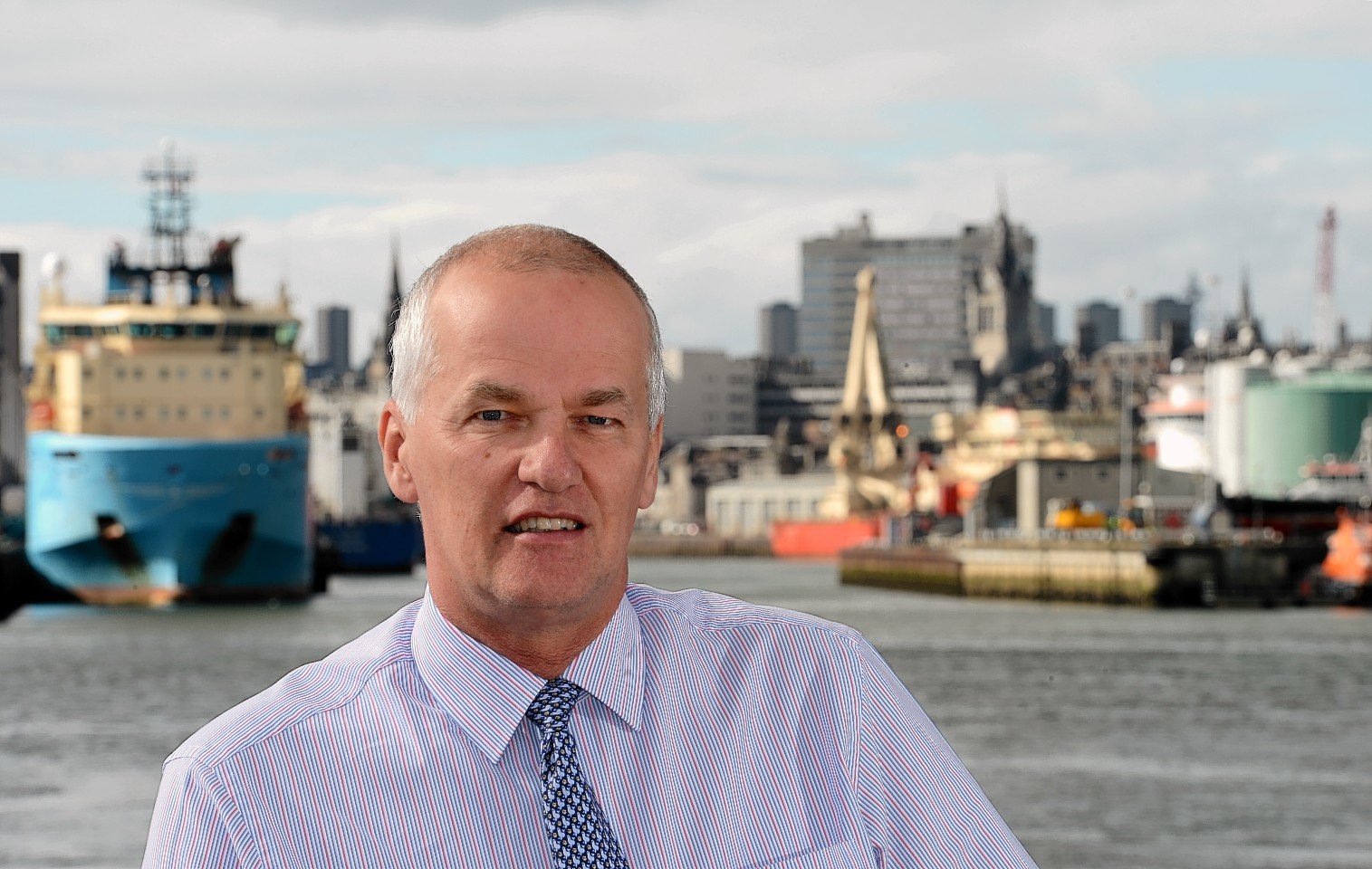Most people would be entitled to feel like they are part of the furniture after more than a quarter of a century at the same company, but when that business is nearly 900 years old, a 27-year stint seems almost transitory.
Yet Colin Parker has seen a great deal of change at Aberdeen Harbour Board, which describes itself as Britain’s oldest business.
The harbour has gone from being a busy fishing port, with a thriving paper and pulp cargo business, to an oil and gas-centred operation with trading links with 41 countries.
Mr Parker, who joined in 1987 and became chief executive in 2006, has also witnessed the construction of a new control tower and the redevelopment of Torry Quay.
One constant factor is growth at the trust port, which now has annual turnover of £28.9million.
The harbour is handling lower numbers of crafts, but vessel and cargo tonnages have exploded.
For the first quarter of 2015, vessel arrivals were up 4% year-on-year and shipping tonnage rose by 5%.
Mr Parker, 57, believes the port is just about fit to burst.
He said: “For the last three years we’ve shelved our growth in tonnage because we’ve (handled) 28million tonnes in that time, and really, we’re at our near capacity.”
The harbour board’s Mancunian CEO cut his teeth with the Merchant Navy, putting in nine years on cargo ships – a demanding job that sorts the men from the boys.
Aberdeen residents will have often noticed a build-up of supply ships waiting out at sea for berthing space.
The prospect of turning custom away is galling for any businessman, including Mr Parker.
The problem could ease once energy companies burn through their backlogs, but the surplus of supply vessels means the planned expansion into Nigg Bay is key to “anchoring the supply chain to the north-east”.
The £320million Nigg Bay project would effectively increase the harbour’s capacity for dive support vessels and larger cruise lines tenfold, Mr Parker said.
The harbour board is working on an environmental impact assessment and has commissioned the construction of a scale model for evaluating wave climate.
Both are expected to be completed this summer.
The port’s bosses are also working with Scottish Enterprise and the local authorities on the development of infrastructure linking Nigg Bay with the nearby Altens and East Tullos industrial estates.
Nigg Bay expansion work could be put out to tender in 2016, with a view to construction getting under way in early 2017.
Father-of-three Mr Parker said he had received more than 40 “expressions of interest” from construction firms, so the task now is to fine-tune the plans to make sure the expanded harbour is “future proof”.
But is it realistic to think you can cover all of the bases without the use of a crystal ball?
Mr Parker, a keen golfer, said the key is adaptability.
He said: “When you try to look at building a new harbour you have to try to think of everything, but there’s no way to predict how markets will change in five or 10 years’ time.
“That’s why we’re looking at building a facility with long quays and clear quaysides, so that you’re not compromising future uses.
“Over the course of its operation that would change. Some buildings may well be built in 20 to 30 years’ time to accommodate a particular activity.
“When I started here there were a lot of buildings on the quayside linked with the fishing industry and various other industries.
“A lot of those have been cleared away to make room for operational space.
“Nothing is ever permanent. You’re always adapting to meet the future demands of your customers.”
